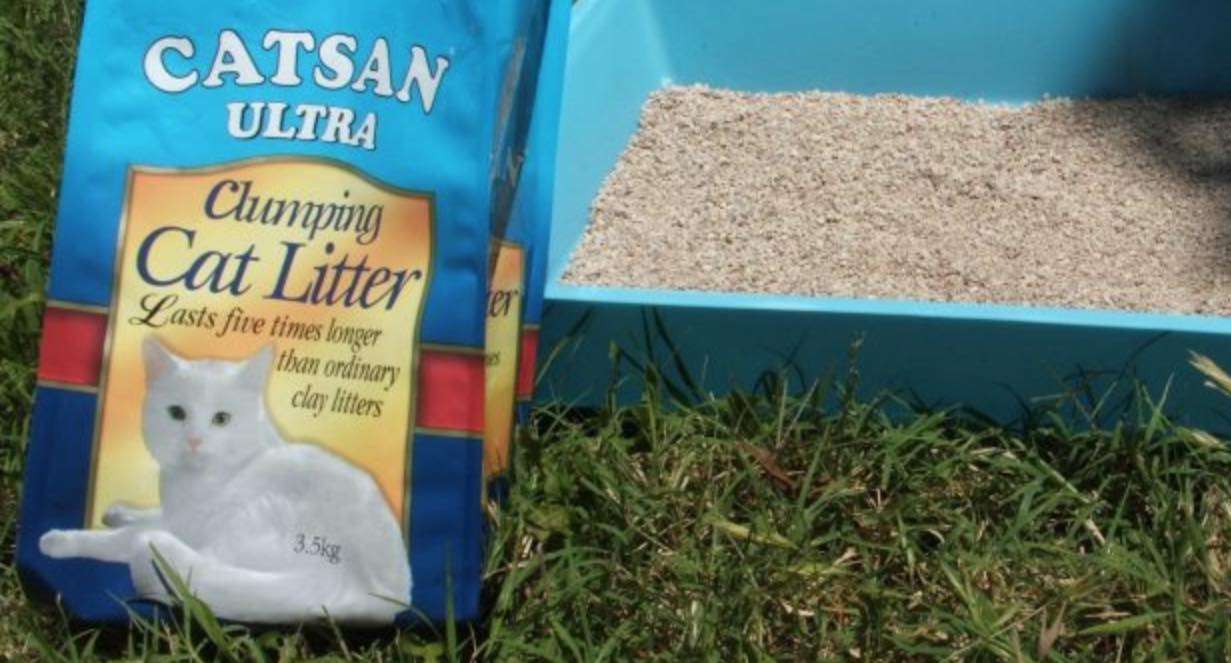Scientists Discover Breakthrough Method of Making Advanced Electronics With H20
The market for expensive fabrication methods in electronics manufacturing could soon dry up after a high-performance material was created via solution processing.

MIT researchers have come up with a dirt-cheap solution to curbing methane emissions in the air—a major cause of global warming—using minerals commonly found in cat litter.
Methane is a far more potent greenhouse gas than carbon dioxide, and is mostly being emitted by such sources as slash-and-burn agriculture, mining, and dairy farming.
"A lot of the methane is from distributed and diffuse sources, so we started to think about how you could take that out of the atmosphere," says doctoral student Rebecca Brenneis, who wrote the paper describing their findings in the journal ACS Environment Au.
The team of MIT scientists, which includes Associate Professor Desiree Plata, has developed the promising approach that uses the inexpensive and abundant type of "dirt" or clay called zeolite.
Zeolite clays are so inexpensive that they are currently used to make cat litter. Treating the zeolite with a small amount of copper, the team found, makes the material very effective at absorbing methane from the air, even at extremely low concentrations.
In their lab tests, tiny particles of the copper-enhanced zeolite material were packed into a reaction tube, which was then heated from the outside as the stream of gas, with methane levels ranging from just 2 parts per million up to 2 percent concentration, flowed through the tube. That range covers everything that might exist in the atmosphere, down to subflammable levels that cannot be burned or flared directly.
Methane is a far more potent greenhouse gas than carbon dioxide, and is mostly being emitted by such sources as slash-and-burn agriculture, mining, and dairy farming.
"A lot of the methane is from distributed and diffuse sources, so we started to think about how you could take that out of the atmosphere," says doctoral student Rebecca Brenneis, who wrote the paper describing their findings in the journal ACS Environment Au.
The team of MIT scientists, which includes Associate Professor Desiree Plata, has developed the promising approach that uses the inexpensive and abundant type of "dirt" or clay called zeolite.
Zeolite clays are so inexpensive that they are currently used to make cat litter. Treating the zeolite with a small amount of copper, the team found, makes the material very effective at absorbing methane from the air, even at extremely low concentrations.
In their lab tests, tiny particles of the copper-enhanced zeolite material were packed into a reaction tube, which was then heated from the outside as the stream of gas, with methane levels ranging from just 2 parts per million up to 2 percent concentration, flowed through the tube. That range covers everything that might exist in the atmosphere, down to subflammable levels that cannot be burned or flared directly.
The process has several advantages over other approaches to removing methane from air, Plata says. Other methods tend to use expensive catalysts such as platinum or palladium, require extreme temperatures of at least 600 degrees Celsius, and tend to require complex and risky processes involving oxygen, which is highly combustible, along with methane.
"The 600 degrees where they run these reactors makes it almost dangerous to be around the methane," said Brenneis.
As for the new process, "I think we're still surprised at how well it works," says Plata, in MIT News.
MIT's process can work at concentrations of methane lower than other methods—even small fractions of 1 percent—which most methods cannot remove, and does so in air rather than pure oxygen, a major advantage for real-world deployment.
The method converts the methane into carbon dioxide. That might sound like a bad thing, given the worldwide efforts to combat carbon dioxide emissions, but Plata points out that carbon dioxide is much less impactful in the atmosphere than methane, which is about 80 times stronger as a greenhouse gas over the first 20 years, and about 25 times stronger for the first century.
Even converting half of the atmosphere's methane to carbon dioxide would increase CO2 levels by less than 1 part per million (about 0.2 percent of today's atmospheric carbon dioxide) while saving about 16 percent of total radiative warming.
Ideal locations for collection would be dairy barns and coal mines. These sources already tend to have powerful air-handling systems in place, since a buildup of methane can be a fire, health, and explosion hazard.
The team has just been awarded a $2 million grant from the U.S. Department of Energy to continue developing specific equipment for methane removal in these types of locations. The next phase of the research will focus on ways of structuring the clay material so to aid in the flow of large volumes of gas.
One potential major advantage of the new system is that the chemical process involved releases heat. By oxidizing the methane, in effect the process is a flame-free form of combustion. If the methane concentration is above 0.5 percent, the heat released is greater than the heat used to get the process started, and this heat could be used to generate excess electricity.
The team's calculations show that "at coal mines, you could potentially generate enough heat to generate electricity at the power plant scale, which is remarkable because it means that the device could pay for itself," Plata says.
Over the next 18 months, they're aiming to demonstrate the concept under conditions more challenging than in the lab. Ultimately, they hope to be able to make devices that would be compatible with existing air-handling systems and could simply be an extra component added in place.
SHARE The Hopeful and Promising Solution With Friends on Social Media…
(The work was supported by the Gerstner Philanthropies, Vanguard Charitable Trust, the Betty Moore Inventor Fellows Program, and MIT's Research Support Committee.)
Be the first to comment